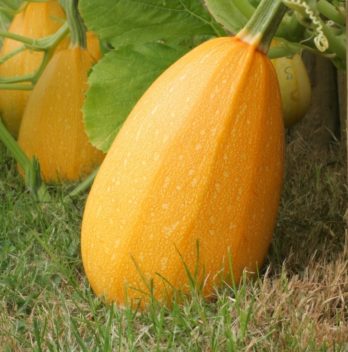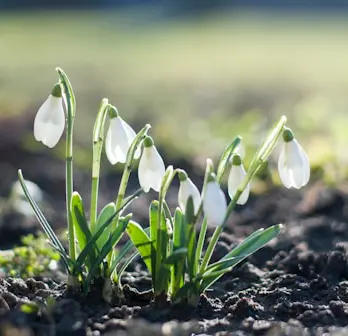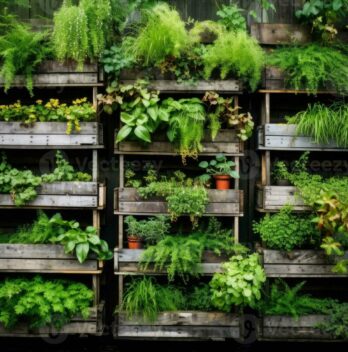Spaghetti squash growing stages a simple and straight forward and any gardener who wants to grow their own can easily follow them.
Spaghetti squash is one of the most popular types of winter squash. It is a great pasta substitute, especially if you’re trying to eat healthier and add more vegetables to your diet. When pulled apart using a fork, the interior cooked spaghetti squash is noodle-like and stringy, mimicking pasta perfectly.
It has a mild flavor taste, especially when topped with garlic pesto or marinara sauce. It is straightforward to grow spaghetti squash as long as you have enough room in your garden.
Here, we will learn the different spaghetti squash growing stages you will need to follow when growing these plants.
What Is Spaghetti Squash?
Spaghetti squash or Cucurbita pepo is a type of winter squash. It is known for its hard rind and long shelf life. Other types of winter squash in the same class as spaghetti squash include butternut, acorn, delicata, and buttercup.
Winter squash has a reasonably long growing before it matures, and its fruits are harvested late in the growing season. The fruits will last for months if stored properly at room temperature in a cool, dry place.
Unlike other winter varieties, Spaghetti squash does not have creamy and smooth flesh; instead, it’s stringy and unique. Its skin is smooth, producing a soft yellow color at maturity.

Click here to learn about How To Grow Butternut Squash In A Container
Spaghetti Squash Growing Stages
When you are growing your spaghetti squash, it is vital to know its growing stages so that you can cross-check your plans to see if they’re doing well. Let’s look at the stages of growing spaghetti squash.
Stage 1 – Starting Spaghetti Squash From Seed
-
To start your spaghetti squash seeds, you will need to wait for the warm climatic conditions to set in early spring. You will require a long growing season with one climatic condition that will include warmth when planting. That said, the spaghetti seeds should be sowed after the last frost date has passed.
Most gardeners have a standard way of starting their spaghetti squash seeds indoors as they wait for the frost date to pass and the
soil to warm up.If you start your seeds indoors, ensure you do so a month to the last frost date in your area. Your seedlings will germinate and at least get some leaves in a month. Use large containers when starting them indoors instead of small seed trays.
Put 3 to 4 seeds in each container that has the size of about 3 inches wide. Sow each seed at a depth of 1 inch under the
soil . Place your pot’s location where it warms up to help with proper germination when sprouting.
Gardeners Basics Squash Seeds for Your Non-GMO Heirloom Vegetable Garden
Stage 2 – Transplanting Your Spaghetti Squash Seedlings
-
After the frost is over, you will have to wait for at least 15 days to transplant your seedlings.
If you have cold weather conditions, you can lay back a black plastic on the ground of your garden to warm your
soil before transplanting.You may also consider growing spaghetti squash in hills or raised beds. You can grow your squash vertical to save you space, but spaghetti squash is not a good idea. The fruits of the spaghetti squash are not too big and don’t look good if you offer support to them on the vine when they’re hanging mid-air.
When you are ready to transplant, ensure that your
soil is loose enough to take in a sibling and add some aged compost manure before planting. Squash labssoil has a good amount of nutrients as it is a heavy feeder.Ensure the location that you are transplanting your spaghetti squash has full sun and space them at least 3 feet apart per hill. If you experience too much sun, it is advisable to provide them with at least 6 hours of sun and partial shade.
Check Out How To Grow Butternut Squash In A Container
Stage 3 – Care And Maintenance When Growing Spaghetti Squash
Once you have planted your spaghetti squash seedlings, it is time to take care of them.
-
After the hot summer has passed, you will need to take off any new flowers produced by the squash vines. This is because there isn’t sufficient time for them to reach maturity, and the plant’s resources will be used in a better way to grow the squash that is already developed on the vine. By doing this, your squash will be growing in the complete season.
Provide good mulching or lids for your fruit to protect it from the rot that comes from being laid on the
soil .Keep your spaghetti plants well-watered and free from weeds as the leaves develop. Once the leaves are completely grown, they will start shading the
soil surrounding them, eliminating the weeds without your help.

-
To help save your space, try to plant a variety of squash as a bush. Select the types that do well as a bush or vines, depending on the amount of space you have.
If you are growing your spaghetti squash in a large pot provided with at least five gallons of water every day for every plant.
Provide your spaghetti squash with a bit of feeding during the growing season to replenish any nutrients the
soil may not be providing.The most common pests that affect spaghetti squash are cucumber beetle and squash bugs. These are sufficiently big and can be taken of your plants using your hand immediately you spot them. Ensure that you check the lower and upper sides of the leaves, looking for pests.
Remove every weed as it commonly encourages mildew if the climatic conditions are damp. Mildew looks like white powder dust on the leaves and affects the development of your plant. Use fungicide sprays to help clear this mildew, and you can also prevent it by watering your squash plants at the
soil base rather than sprinkling water leaves.
Your plant should be growing well at this stage.
Stage 4 – Harvesting Spaghetti Squash
-
-
Push your nails into the external skin to check if your spaghetti squash is ready for harvest. The skin of a spaghetti squash needs to be sufficiently tough to tolerate your fingernail full stop; if the skin is light and gets punctured quickly, your squash needs more time to grow.
-
Another indication to check is when vines start to wither. This sign shows that your spaghetti squash is ready for harvest.
-
Stage 5 – Storing Your Spaghetti Squash
You can store your spaghetti squash at room temperature where the weather conditions are dry. You can keep a whole squash in a refrigerator for 15 days before it starts to lose its texture.
Store your spaghetti squash away from moisture or any dampness if you want them to survive for months.
FAQs
How long does it take for spaghetti squash to grow?
It can take a while. Spaghetti squash can be grown from seed in about 90 days. The seeds are tiny, but it’s still easy to grow one.
It does need the light of day and a warm temperature to grow well. In the fall, it can be stored in the fridge or freezer until the spring, when you can plant it again.
Is spaghetti squash easy to grow?
Spaghetti squash is a popular vegetable and is one of the easiest vegetables to grow at home and can be enjoyed as a delicious side dish or main course. Spaghetti squash likes to grow in warm, moist soil. It grows best in soil that has been amended with composted manure and other nutrients. Spaghetti squash also enjoys regular watering. Spaghetti squash seeds are often sold in seed starting trays. These trays contain small pockets of soil where the seeds can germinate and grow into seedlings. You can also purchase pre-germinated seeds. Spaghetti needs a lot of water. The squash will grow best when you water it about twice a week during the summer months.
Do spaghetti squash plants climb?
Spaghetti squash are not climbers, but if you cut the top off, the squash will continue to grow, just not develop a vine. The leaves will continue to grow, and you’ll need to keep harvesting the squash from the plant as it grows, or it will get too big.
Spaghetti squash tend to have a “vines” that you can see from a distance. The vine is actually the stem of the fruit, and it has the seeds attached to it. It does not grow in a regular upright fashion, but rather grows horizontally.
Do spaghetti squash need full sun?
Spaghetti squash is a warm-season plant and needs at least 6 hours of direct sunlight per day. In the summer months, it will do fine with some shade, but in the spring and fall, it will do better with full sun. Squash grows best in average soil, but also will tolerate poor, sandy soil.
Does spaghetti squash do well in the winter?
Since spaghetti squash is not a true vegetable, it does not do well when the temperatures are too cold. They do well when the temperatures are above freezing, but they can freeze when the temperatures fall below that.
Why is my spaghetti squash not growing?
Spaghetti squash needs around 60 degrees to grow well, and your location may not be able to support this. If you’re in a warmer area, check your soil temperature before you plant. Also, check the bottom of your container – if it is getting too warm, it may be causing the squash to stop growing.You should be able to grow it inside or in a pot, so if you have a windowsill or balcony, put it there. If you don’t have that, put it on your windowsill.
If you’re growing outside, your squash is going to need at least four hours of direct sunlight each day. Make sure that it is exposed to the sun and has a place to dry out during the day.
Also, it may be because of a fungal infection.
Conclusion
The above information shows the spaghetti squash growing stages you will need to look out for when growing your own. Squash has plenty of nutrients that our bodies require. And what better way to replenish our bodies and grow a bountiful crop of spaghetti squash and use it to better our health.

Brian is an avid gardener who loves spending time outdoors. He is passionate about using his green thumb to create beautiful, lush gardens for her friends and family. He finds joy in tending to her garden, trimming plants, and cultivating new species. He enjoys to share his knowledge and experience with others with a similar gardening enthusiasm. Brian is a true nature enthusiast and a has true passion for the outdoors.




